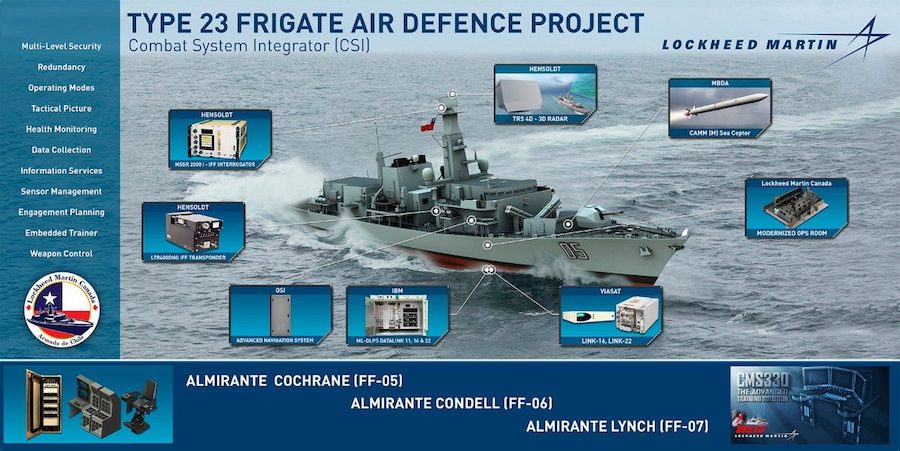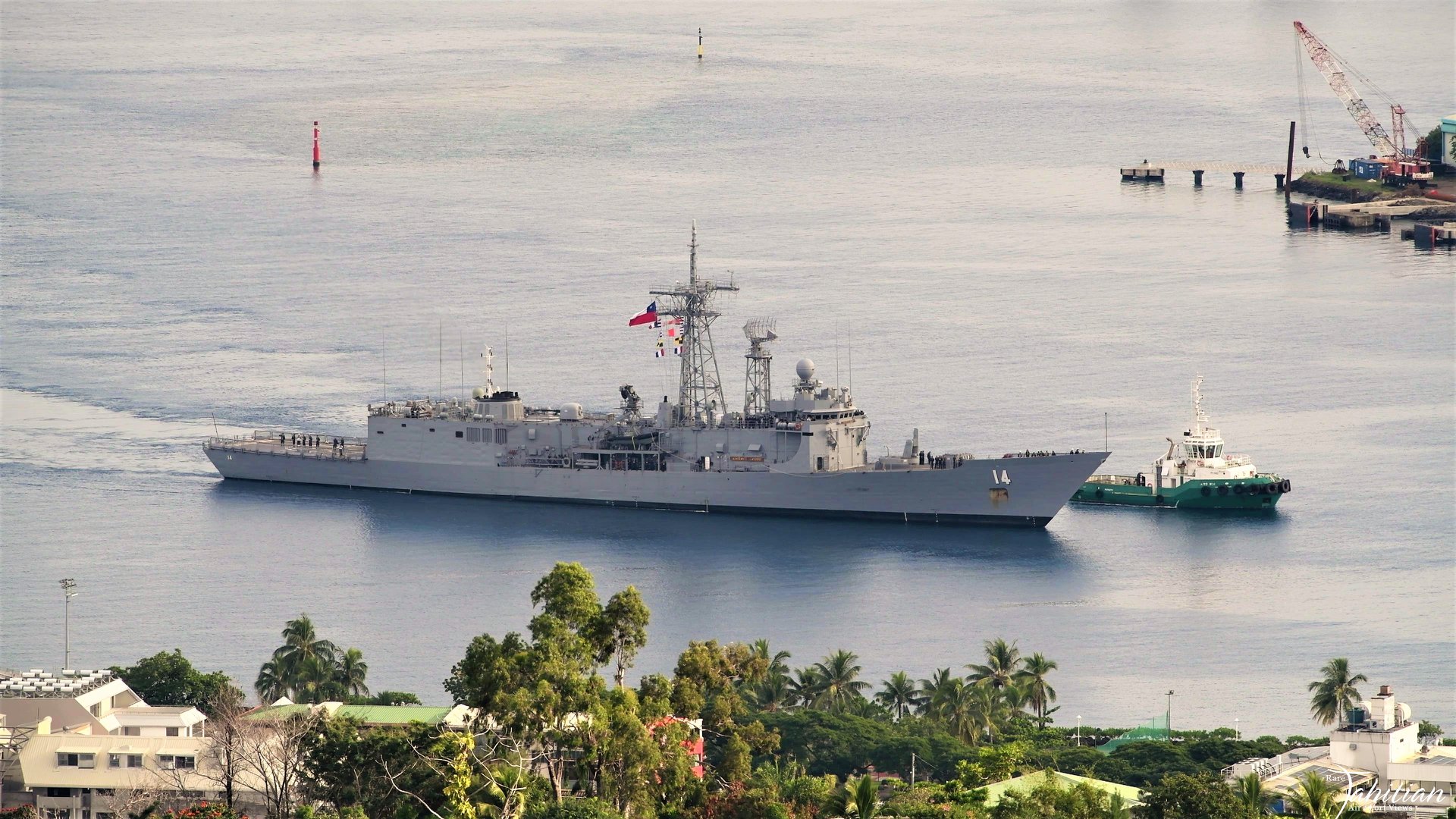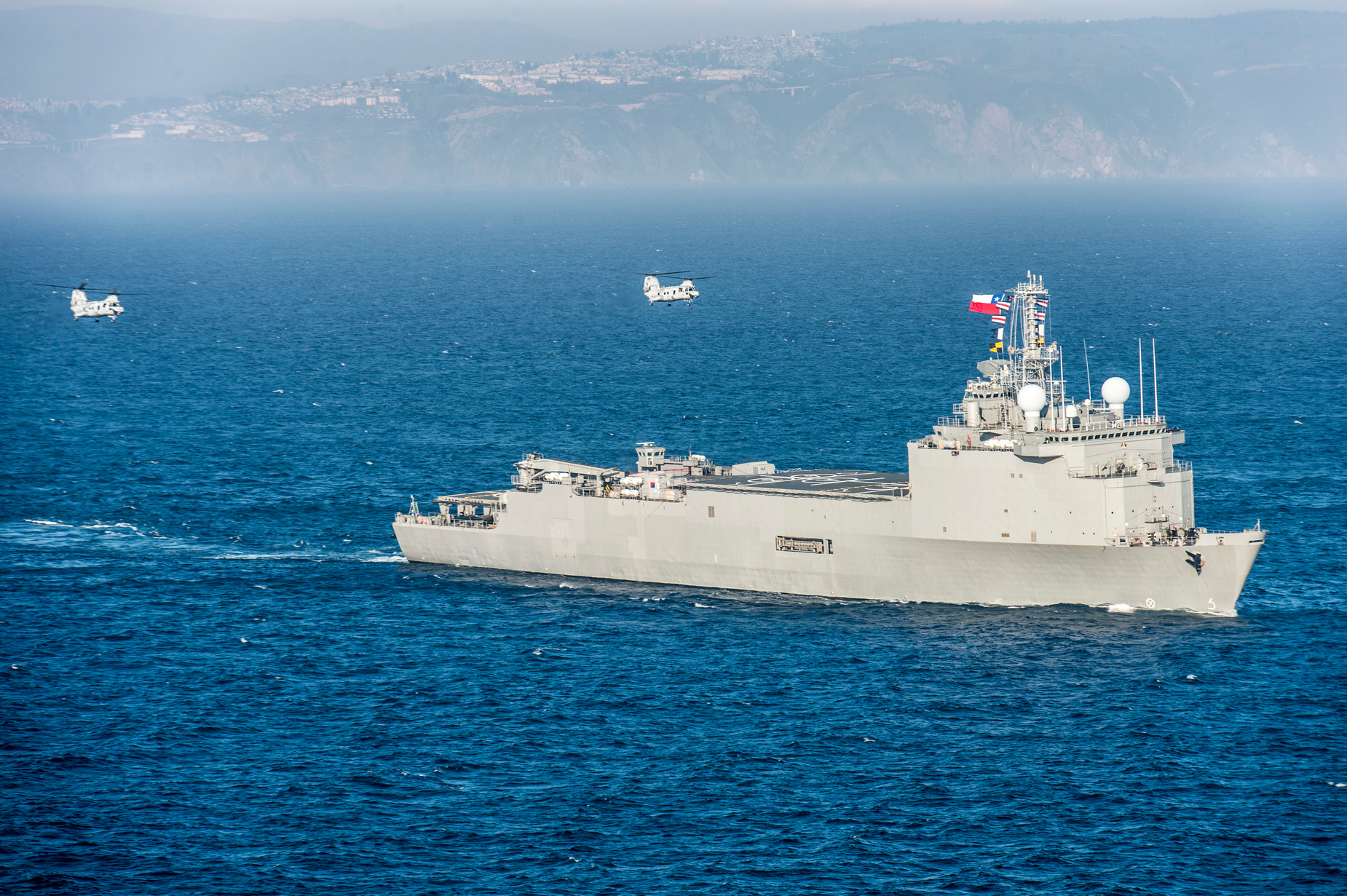We can say that our navy predates modern Greece, from the armed merchant ships of the Greek islands during the Turkish occupation, which thus defended themselves against pirates. Of course, the official creation of the branch took place after 1821. But somewhere in there, another navy was born, which we have mentioned often in recent years, That chile.
Its history also began in the nineteenth century, specifically in 1817, during the Chilean War of Independence from the Spanish Empire. The first boats, as in Greece, were commercially armed, but also boats captured by the Spanish, as well as some purchased from Britain and the USA. British assistance as head of the new navy was important here It was Lord Cochrane (An unexpected character at the time, a British naval officer, but also a lover of adventure), with extensive experience in the Napoleonic Wars. This name is not known in Greece either, where Cochrane was appointed admiral in the Greek Navy in 1827, succeeding Miaoulis!
During the 19th century, the Chilean Navy participated in numerous campaigns and wars, such as the War of Confederation of 1836-1839 and the War of 1879-1883 with Bolivia and Peru. As the twentieth century entered, new warships were purchased from British and German shipyards, among them light cruisers and destroyers, but nothing as impressive as the Greek ship Averof, for example. The fleet expanded in the 1930s and 1940s with new purchases. During World War II, the Chilean Navy patrolled Latin American waters searching for Axis ships and protecting Allied shipping, as the country sided with the Allies.
Today, the Chilean Navy is organized into four regions, each with a regional commander and a fleet:
- The first marine region: the northern and central coasts
- The second marine region: the southern coasts
- Marine Region III: Tierra del Fuego and Antarctica
- Fourth marine region: rivers and lakes
Now, about 30,000 men (including marines), 4 submarines, 8 frigates, 3 missile boats, 4 landing craft, 8 large patrol boats, 2 large carriers/auxiliary fleet, are deployed. And many other ships There is no doubt that Chile has a large naval power relative to South America, which is quite reasonable for a country with such an extensive coastline.
However, the country has not spent lavishly in recent decades to acquire this force, as many of the front-line ships have been acquired second-hand from foreign navies. Many of the ships possessed by Chile should be seen in service in our navy. With the acquisition of the two Australian Adelaide-class frigates, which, due to apparent Greek incompetence, ended up in the South American country. But let's see what used cars the Chileans got…
British Type 23 and Type 22 frigates
The country has three Type 23 frigates: Almirante Cochrane (ex-HMS Norfolk), Almirante Lynch (ex-HMS Grafton) and Almirante Condell (ex-HMS Marlborough). These aircraft were operated between 2006 and 2008, but entered service with the British Navy in 1990, 1997 and 1991 respectively.
Likewise, the Type 22 Almirante Williams frigate (formerly HMS Sheffield), previously the flagship of the Chilean Navy, was in British service from 1988 until it was captured by Chile in 2003.

However, Chile has invested more than 3 impressive – by today's standards – Type 23 frigates. In February 2017, Lockheed Martin Canada took over as prime contractor for its upgrade program. The modernization is based on the CMS 330 combat management system, with a new TRS-4D main radar from Hensoldt and 32 Sea Ceptor anti-aircraft missiles (CAMM) from MBDA. Other new equipment is an IBM computing system, a Hensoldt IFF MSSR 2000I navigation system and an OSI Maritime Systems navigation system. Lockheed Martin Canada also signed an agreement with Chile's DTS to upgrade the RD-170 electronic surveillance system, ESM.
The upgrades were carried out in cooperation with the local shipyard ASMAR and DESA, which developed the MAITEN-45CH fire control system. In 2020, an additional contract was signed with the local company SISDEF to further develop the combat systems. In short, Chile's modern Type 23 aircraft will operate comfortably until 2040.
Dutch Karel Dorman (Class M) – Another loss for us
In addition, Chile has two Dutch Karel Doorman-class frigates, Almirante Blanco Encalada (ex-HNLMS Van Der Hulst) and Almirante Riveros (ex-HNLMS Tjerk Hiddes). They joined the Chilean service in 2005 and 2007 respectively, having already served for almost 14 years in the Dutch Navy. These frigates are capable, and are expected to join a modernization program like the Type 23s.

We remind you that in 2005, Chile also received two Dutch L-class frigates (Jacob van Heemskerk), which is basically the well-known Kortenaer (S) where instead of a helipad and helipad they had a Mk13 launcher for Standard SM-1 missiles, while retaining the Mk29 launcher for Sea Sparrow missiles. If you think these ships could have been modernized, with the Mk13s being capable of firing SM-2 missiles, and the Mk29s being capable of firing ESSM missiles, then you can see why we would want to see them in the PN. But Chile withdrew it in 2019, after 14 years of service.
Why did the Navy reject the two Australian frigates Adelaide? Even though we need them?
Frigates “Adelaide”, which did not reach Greece
The last acquisition of used frigates was in 2020, when Chile purchased the last two in service of this class. adelaide, From the Australian Navy. These are Almirante Latorre (ex-HMAS Melbourne) and Capitan Prat (ex-HMAS Newcastle). These ships entered service in Australia in 1992 and 1993 respectively. It is of a similar type to the Spanish Santa Maria class frigates, while it has undergone extensive modernization in the Australian Navy.

Specifically, it is equipped with 8x Mk41 launchers for ESSM missiles, the ability to use SM-2 missiles from the Mk13 launcher, an upgrade to Phalanx systems and other improvements, including the upcoming advanced Nulka missile decoy systems. This modernization allowed Chile to obtain highly capable frigates at an incredibly low price. Shortly after their acquisition, the country also received SM-2 missiles from the United States, gaining air defense capabilities unique to South America.
Chile: The Adelaide frigates have got a mountain of spare parts, haven't they?
Sa'ar 4 missiles and the French command ship
Chile also has three Sa'ar 4 missile boats purchased from the Israeli Navy, both of which have only been in service for a few years (built in 1973-1974 and acquired in 1979-1980). It is 60 meters long and can carry Exocet MM40 or Gabriel missiles, with a maximum speed of 30 knots. In addition, in 2011, the Chilean Navy acquired a French amphibious operations ship and command ship Fodder 12,500 tons (entered service in 1990), renamed Sargento Aldea. Their addition has greatly enhanced the country's amphibious capabilities, again at low cost.

Oil tankers from the USA and Sweden
For refueling at sea, Chile also uses two second-hand vessels. The largest is the 42,000-ton Almirante Montt, a former USS Henry J. Kaiser-class ship and the USS Andrew J. Higgins, which joined the Chilean Navy in 2010. It has a massive fuel-carrying capacity of 29,000 cubic metres. .

The second is “Araucano”, a Swedish-built 1984 tanker weighing 26,000 tons that entered service in 2011. Acquiring these tankers allows the Chilean Navy to conduct long operations away from its bases.
“Used” power.
Chile's overall strategy to strengthen its navy with second-hand ships has proven successful. By remaining alert to what was available on the international market, it was able to quickly acquire highly capable frigates, missile launchers, and support ships without the prohibitive cost of building new units. And even making purchases from everywhere in the West, as we have seen, through Australian, British, American, French, and Israeli ships, and building an efficient navy, open seas, which he is gradually maintaining and modernizing. While it now also designs its own boats to complement its needs.
But Greece did exactly the opposite! Which in a stunning display of new enrichment…
sequel to Naval defence





More Stories
F-16 crashes in Ukraine – pilot dies due to his own error
Namibia plans to kill more than 700 wild animals to feed starving population
Endurance test for EU-Turkey relations and Ankara with Greece and Cyprus